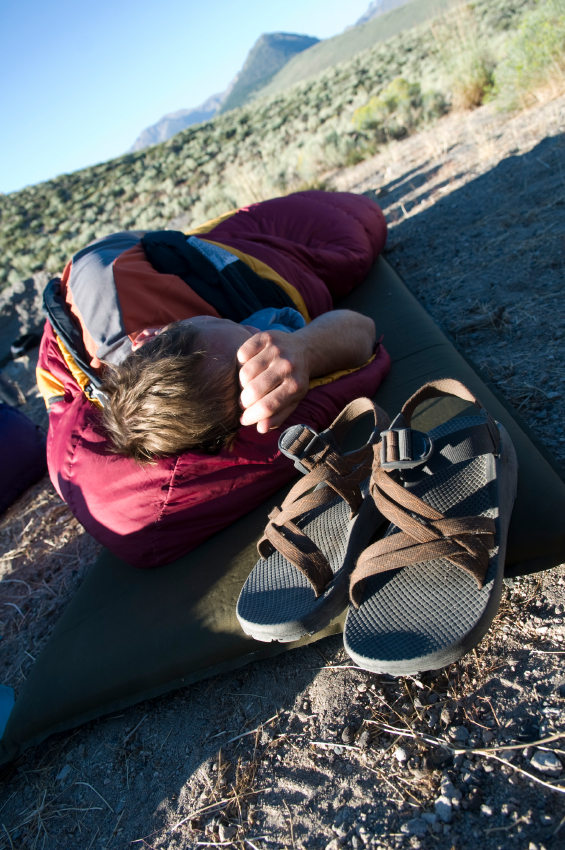Sleeping Bag Buying Guide
Backpacking Sleeping Bags 101
Contrary to what some may believe, backpacking sleeping bags aren’t “one size fits all.” What bag you buy should depend on your body type, backpacking climate, personal preference, and other variables. Before forking out money to purchase this expensive item, be sure to research what exactly you need and want, read reviews, and shop around. With hundreds of models to choose from, you don’t want to restlessly lie in your tent all night simply because of an inadequate sleeping bag.
Pack Capacity
When purchasing a backpack, selecting one with an appropriate capacity, or volume, for the situations you’ll be backpacking in is essential. Think how long of trips you plan to use it for will be and in what season you’ll be going, as these factors will determine the capacity you’ll need to fit all necessary gear. See table for more specific guidelines for backpack capacity based on trip duration and season.
| Trip Duration | Season | Pack Capacity (liters) |
Pack Capacity (cubic inches) |
|
|---|---|---|---|---|
| General capacity guidelines depending on duration & season from Sierra Trading Post. | ||||
| 5 nights or more | Summer | 65-80 | 4000-5000 | |
| Spring/Fall | 80-90 | Over 5000 | ||
| Winter | 80-90 | Over 5000 | ||
| 3-5 nights | Summer | 50-65 | 3000-4000 | |
| Spring/Fall | 65-80 | 4000-5000 | ||
| Winter | 80-90 | Over 5000 | ||
| 1-2 nights | Summer | 40-50 | 2500-3000 | |
| Spring/Fall | 50-55 | 3000-3500 | ||
| Winter | 65-80 | 4000-5000 | ||
| Day hikes | Summer | 25-35 | 1500-2000 | |
| Spring/Fall | 35-40 | 2000-2500 | ||
| Winter | 40-55 | 2500-3500 | ||
Measuring Capacity:
Backpack Frame Types
These days, almost all backpacks feature an internal frame design, however external frames are also available. The close-fitting and flexible design of an internal frame backpack enhances your balance and keeps your load stable on any terrain. This is ideal for many activities, such as mountaineering, skiing, scrambling and hiking in rough terrain. Internal frame backpacks also allow for more movement, letting your arms swing freely because of the narrow profiles. On the other hand, external frame packs help backpacks carry heavy loads. They also are divided into compartments, making it easier to organize and find items inside the pack compared to the single, main compartment of internal frame packs. External frame backpacks still exist, although they are hard to find as retailers are attempting to move away from them.
Sizing and Fitting the Backpack
Your waist size also matters, though most hip belts can be adjusted to fit a wide range of waist sizes. Just make sure the hip belt is comfortable when you try it on.
Many packs allow you to fine-tune their torso fit via easily adjustable suspension systems. The alternative is a fixed-suspension pack. This type is non-adjustable, but offers the advantages of being less complex and thus lighter than a comparable adjustable model.
To ensure that your pack fits properly, visit our Sizing and Fitting a Backpack article for more in-depth information.
Other Key Backpack Features
Support (stays or framesheet): Typically, one or two aluminum stays are used to transfer the weight of the load to your hip belt. Stays are typically a rod or bar, though some now feature a tubular design to reduce weight. Other packs use a stiff plastic HDPE (high-density polyethylene) framesheet for load support. This thin sheet helps prevent objects in your pack from poking you in the back. A number of packs now offer a stay/framesheet combo.
Suspension system: This refers to the load-supporting system of shoulder straps, load lifter straps, a sternum strap and stabilizer straps. Packs offer either Adjustable or Fixed Suspension. Adjustable Suspension allows you to fine-tune the fit of your pack to match your torso size. Many feature a ladder-type system of rip-and-stick closure that let you move the shoulder harness up or down in small increments. Read Sizing and Fitting a Backpack for more information about adjusting the suspension system on your backpack.




